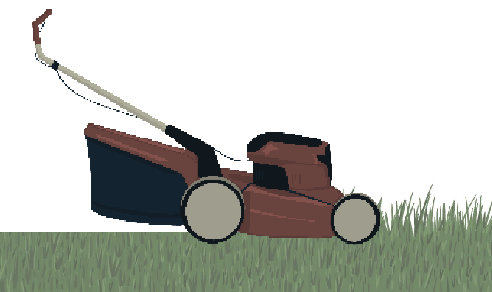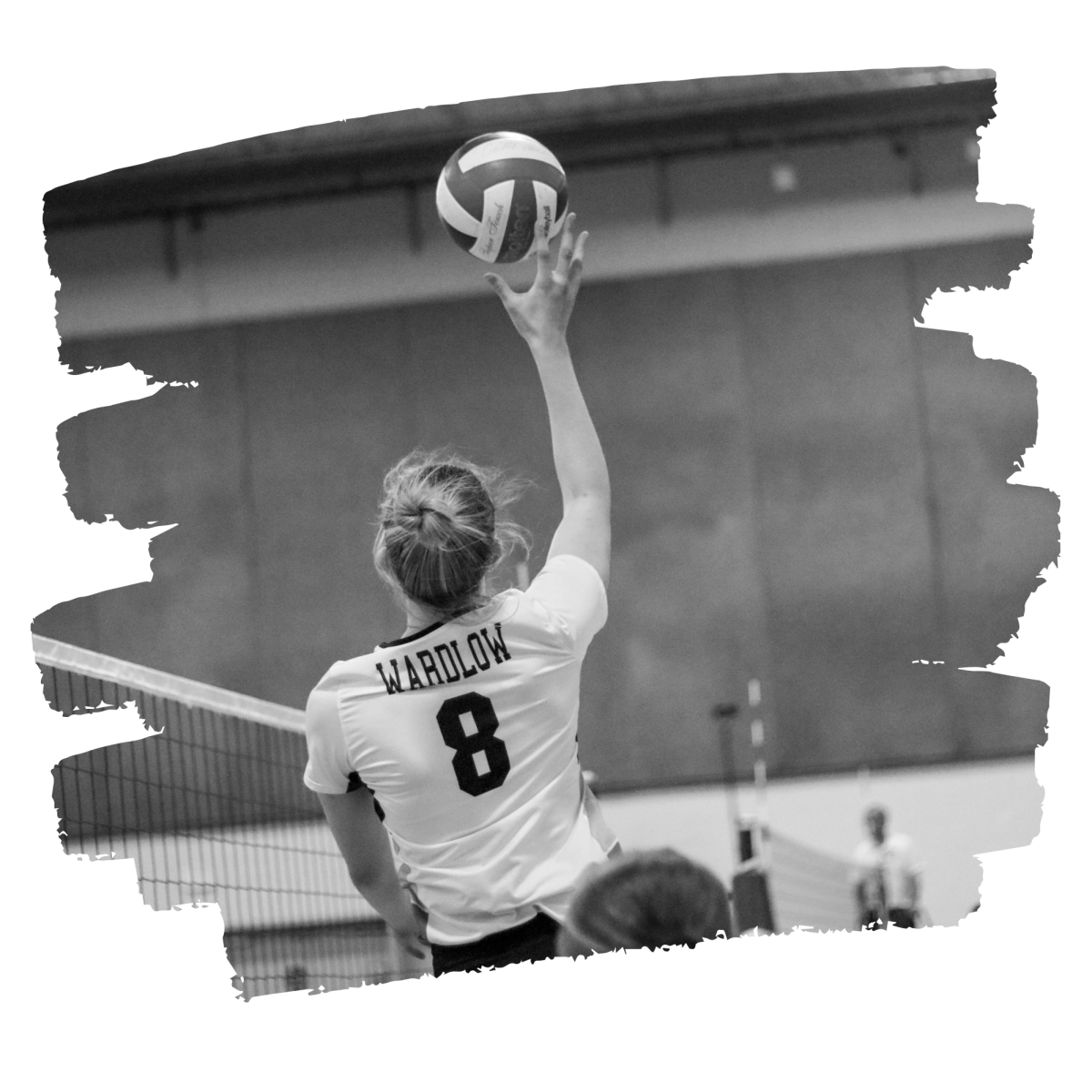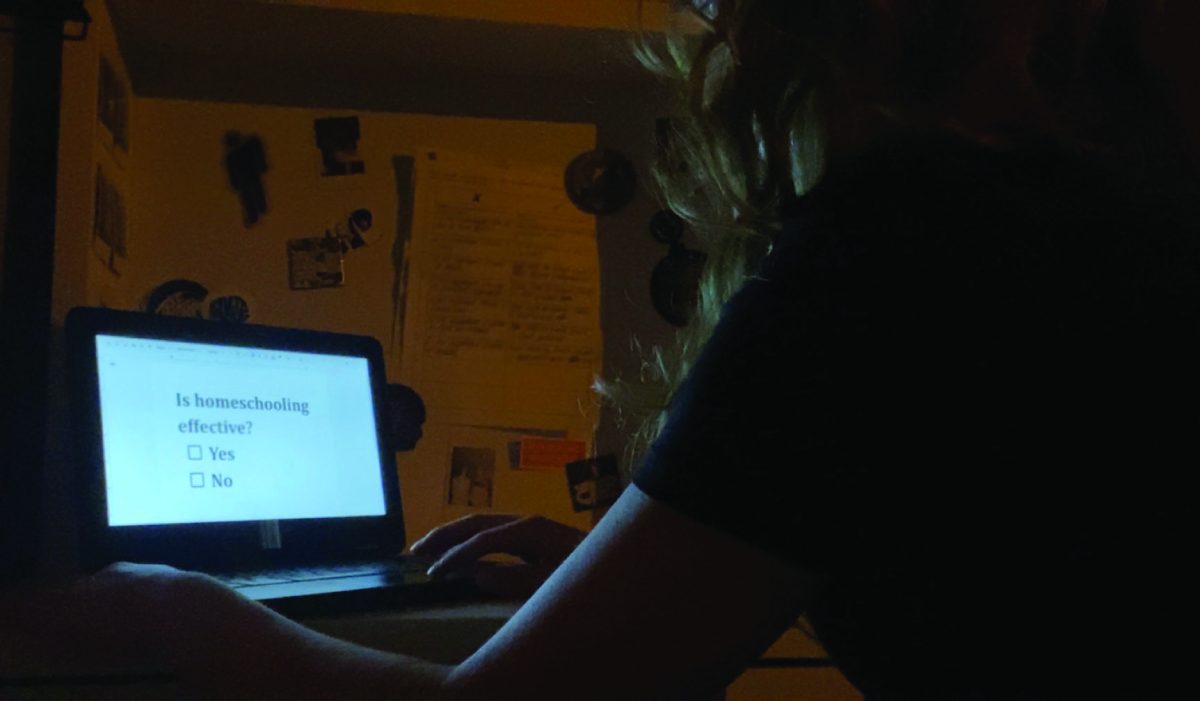The American obsession with lawns
Societal Expectations for cultivating a vibrant lawn is killing the environment

May 20, 2022
People’s modern day obsession with lawns has made its way to the dance floor.
From the sprinkler move to California’s turf dancing, it’s proving that lawns are one of the many things people just can’t get enough of.
PAST
The Lawn Institute states that the lawn’s main purpose has been to protect our environment, but it has changed drastically since then and has become a major symbol for the classical American dream.
The introduction of turfgrasses into society through games was designed to simply “enhance the quality of life for humans” by preventing soil erosion, dust prevention and dissipating heat according to The Lawn Institute.
However, people in different areas of the world used these grassy areas for a variety of purposes.
“Thousands of years ago in Africa, low turfgrasses allowed humans to better spot approaching danger or stalk their prey,” the Lawn Institute said. “In medieval times (in England and across Europe) tree-free grass-filled spaces around castles made it easier for watchmen to scan the horizon for people.”
By the 16th century, European influences from landscapes led to the big boom in gardens for homes of the elite. It wasn’t until the colonization of America that the lawn evolved again.
The next group of lawn-crazed immigrants came from Europe, bringing seeds of their own, and that’s when the lawn trend started to grow.
In a 2017 article from Scientific American, journalist Krystal D’Costa wrote that lawns wouldn’t reach the American middle class until well after the civil war. Most Americans in the last 19th and early 20th centuries had no front yard as they couldn’t afford maintenance and upkeep that the lawns required.
This, according to D’Costa,was no new trend as in previous centuries in the United States (U.S.), Europe, China, and Japan only the wealthy could afford “expanses of scythe-mown lawns [while] Commoners used cattle and livestock to keep their lawn manicured.”
Over the many years it took for lawns to make their way into suburban areas, it became a prominent symbol of status. Having a lawn meant living in predominantly white neighborhoods which not only divided the social classes, but also the races.
Even after the abolition of slavery, prejudice towards African Americans was still prevalent and enforced through something called “redlining”.
In a 2021 article from the New York Times titled “What Is Redlining?”, author Candace Jackson describes ‘redlining’ as “racial discrimination of any kind in housing, but comes from government maps that outlined areas where Black residents lived and were therefore deemed risky investments”.
Redlining allowed for white Americans to reside in wealthy and lawn-heavy suburban neighborhoods whereas African Americans were forced into urban settings. This of course restricted their ability to cultivate and maintain a traditional lawn that’s known today.
While the racist implications of redlining previously restricted african americans from living in areas where a grassy lawn was attainable, the advancement of civil rights has granted better access to lawns for all Americans. Now, lawns are covering the U.S. more than ever.
A research group called Milesi found that there are roughly three times more acres of lawns in the U.S. compared to irrigated corn, making lawns the largest irrigated crop in America. In terms of surface area, Americans’ lawns cover roughly 80,000 miles which is about the same size as Kansas.
“Lawns are the most grown crop in the U.S.- and they’re not one that anyone can eat,” D’Costa wrote. “Their primary purpose is to make us look and feel good about ourselves.”
Today’s generation of lawn obsessed people are proving that their lawns are important through the hours of time spent, hundreds to thousands of dollars spent annually and the energy they give to ensure the grass is not greener on the other side.
PRESENT
Local Lincoln company, Mike’s Organic Lawns started serving Lincolnites in 2011, providing a four-step organic fertilizer program that was unlike any other lawn care company in the area.
“All the products we use are completely safe for your family, your pets, and the environment. This includes our 100% safe and natural fertilizers and application,” Krissy Comstock, representative for Mike’s Organic Lawn Care, said.
This treatment, in addition to annual aeration (perforating the soil with small holes to allow air, water and nutrients to penetrate the grass roots- Briggs and Stratton lawn company) and overseeding can lead to lucious looking lawns as well as being more environmentally friendly ways to enhance a lawn’s appearance.
“Annual aeration helps relieve compacted soils, aids in water and fertilizer absorption, increases rooting depth and encourages healthier turf plants,” Comstock said. “In addition to aeration we recommend overseeding. Every lawn can benefit from annual overseeding. Like any plant, turf plants have a lifespan; as your lawn ages, the turf will naturally thin and need replacing. Overseeding on an annual basis will help to replace the aging grass and introduce newer varieties that have better color characteristics, improved drought resistance and increased pest resistance.”
Mikes Organic Lawns provides these services to customers of all ages while Lincoln Southeast (LSE) Senior Alden Zabawa is taking care of his lawn customers through mowing and cleanup.
Zabawa’s lawn care service, A to Z Lawn Care, is in its third year of operation. According to Zabawa, it started off rather “small scale”, by running the business out of his car.
“I bought a hitch for my car, to have a platform on it, and then on that platform, I just put a mower back there. That’s everything. Everything that [I] needed to start up,” he said.
Both Comstock and Zabawa agree that the market for lawn care customers is booming and reaches all corners of the population.
“I have a variety of clients, but they probably all share one pretty common trait: they just don’t, for some odd reason, have time to take care of them,” Zabawa said. “I have a lot of elderly clients. I have a lot of people who have kids like newborns and they’re spending time with them in the summer. And yeah, people who are working.”.
Comstock says the majority of Mike’s Organic Lawn Care customers also come from all walks of life but are mainly made up of families, pet owners and “those who aim to help keep the environment safer for all.”
Over the last couple years, both A to Z Lawn Care and Mike’s Organic Lawn Care have seen an increase of lawns in Lincoln.
With Lincoln being named one of the top ten cities to raise a family in, there has been a lot more neighborhood development to accommodate. In this comes a spike in lawns and an even higher demand for lawn care professionals, however not too many Lincolnites are transitioning to landscaping.
“There’s been a lot more grass [and] there hasn’t been a lot of landscaping that I’ve had to go around” Zabawa said.
Comstock said she’s seen a lot of lawns that have smaller areas transitioning into more sustainable options, but the overall amount of lawns they tend to have has been increasing.
“We do have a lot of customers or potential customers who have turned larger areas into prairie/native grasses, butterfly gardens, landscaping and raised gardens,” she said.
Both lawn care services service all of Lincoln and provide services such as aeration, fertilization for Mike’s Organic Lawns and mowing, winter clean up, debris clean up and some fertilization for Zabawa’s A to Z Lawn Care.
For Zabawa, he’s just impressed by how much people care about lawns and the industry it’s provided. Previously working at Roca Berry Farms, there was a massive jump financially from setting up for the Halloween season versus his time at A to Z Lawn Care.
“I think [the lawn care industry] is actually insane because people will pay so much for a lawn. [For instance] when I transitioned from a nine to five job to this lawn care, I was unfathomably bewildered, honestly, about how much people would pay,” Zabawa said. “Because it’s great money and grass, there’s no like, you know, it’s not a very useful resource. Like why aren’t we planting carrots in our front yard and feeding the population?”
FUTURE
The future of our luscious grass and environment is totally dependent on how the people of today handle lawn care.
Currently, the same Scientific American article reports that on average, the amount of water used per lawn amounts to that the average lawns gulpings up roughly 200 gallons of drinking quality water per person per day. In places such as California this is proving to be problematic for drought-prone communities, so many have taken to social media to shame their water-happy neighbors.
Sam Sander’s NPR article about drought shame shows the new and creative ways people have called out their fellow Californians, and even some celebrities.
The hashtag #droughtshame rose in popularity circa 2015 in addition to apps such as VizSafe or DroughtShameApp where users can post images and attach them to certain geographical locations.
From there, the hope is that the public shame will either call attention to the water overuse or shame the individuals into using a more responsible level of water for their lawns.
State officials all across the U.S. have resources to report overuse of water, just as there are hotlines for potholes and fallen trees.
The reality is that much of the water used to irrigate lawns doesn’t even reside in the lawn itself, much of it runs off.
In a 2019 New York Times article titled “One Thing You Can Do: Reduce Your Lawn” , journalists Ronda Kaysen and Henry Fountain estimated that roughly half of the water used ends up in places other than intended or is a vehicle for fertilizing chemicals to harm the environment.
“Harmful chemicals are getting into the runoff and are evaporating into our atmosphere and are contributing to the worsening of our climate,” Kaysen and Fountain said.
This toxic concoction can be attributed to the U.S. Geological Survey’s (USGS) estimation of one billion pounds of pesticides used in recent years compared to the EPA’s estimation of just 59 million pounds in 2012 alone.
For nature lovers such as LSE Government and Politics (GoPo) teacher, David Peters, the news is heartbreaking.
Peters grew up playing outside. That is partially where his love of being in the environment flourished. Many of his earliest memories came from camping in lake areas and when he got to college, he became even more engaged in the environment and the issues surrounding it.
His experience of working with and in nature has been shaped from camps in Colorado to extended education in an environmental education focus.
“I’ve always appreciated nature and respected how fragile it is and have been dismayed at how little most Americans seem to care about it,” he said
He knows all about the impacts of the toxic chemicals in fertilizers and has seen first hand the aftermath of decades of reckless use.
“I grew up swimming at Holmes lake. [Then,] the beach was full on a Saturday…it was [packed], and of course now, by the first of June, it’s not safe to go in the water,” he said. “So to see us lose these resources, you know, in real time, [in the] course of one human life, [in] my own life, that’s really depressing and again, it’s hard to make people realize or care about it.”
He finds that so many Americans are becoming much more sedentary than before that they don’t realize what is slowly disappearing.
While the time actually spent enjoying the lawns so many work hard on is declining, a steadily increasing trend is showing that the obsession with our lawns is just skyrocketing. Peters believes this infatuation is rooted in societal norms.
“I think that the ‘Great American Lawn’ says more about our tendency to conform than it does about necessarily anybody’s aesthetic preferences. But in a lot of neighborhoods you’re expected to have [a] type of lawn that is clean and tight,” Peters said.
Pressures to include a sprinkler system, such as the appeal to increase a home’s market value, is a new standard that is subtly encouraging the overuse of water and promoting a non-environmentally friendly solution for lawn upkeep.
One of the more prominent arguments sprinkler system companies promote is the increase in worth.
“A sprinkler system indirectly increases a home’s market value by enhancing the home’s overall curb appeal. Since attractive landscaping requires sufficient watering, an automatic sprinkler system ensures the protection of your investment,” the company ‘Affordable Lawns, Sprinklers, and Lighting’ promotes.
However, while pesticide and water usage continues to skyrocket, a growing movement to protect the environment by going organic or using lawn alternatives is maturing at almost a parallel pace.
“With a growing movement that embraces a more natural lifestyle, there is a trend toward the return of naturalized lawns that welcome flowering weeds, and subsequently support a more diverse entomological ecosystem,” D’Costa said.
Peters has made sure to hold himself accountable and do his part to stay environmentally friendly by making some basic swaps in his yard.
“I don’t know what my neighbors think of my lawn, but I like it because anything green is allowed to grow on the part that is ‘grass’, but I have a really small patch of grass in my front yard,” he said. “There might be some weeds here or there, but it’s green. And driving by on the street, [my yard] looks the same as anybody’s or close enough to anybody else’s yard. Then I have my entire backyard planted with shrubs and perennials and native grasses. And about half of the front yard also bermed with mulch cover and lots of perennial flowers. I have a pollinator habitat, stuff like pasture and goldenrod, a bunch of milkweed growing wild and native plants.”
He finds that the incorporation of biodiversity in the plants he has chosen attracts a beautiful array of insects and bugs that flock to his home each year.
“Anytime in July, August, September, you’re gonna see butterflies like crazy, honey bees everywhere, and a whole bunch of bugs flying around [at my house]. I think we have more biodiversity there than my neighbors,” he said.
Peters is optimistic that the desire to have a typical suburban lawn is changing and other lawn alternatives are becoming even more popular.
“I do think more and more people are choosing to mulch large sections and bring in native plants and kind of diversify the habitat because it is more visually appealing, although [it might be] a little bit more maintenance than plain old Kentucky bluegrass,” Peters said. “I think maybe those changes are happening. Slowly. And naturally. I’d like to think that the pollinator gardens are because they are kind of coming back.”
Mick Telkamp said in his HGTV article discussing lawn trends that artificial turf and lawn paint have recently become popular in the lawn industry.
Elemental.green, a digital media company focused on more eco friendly products, has a comprehensive list of lawn alternatives homeowners can use to inspire their transition to a more eco friendly lawn.
“The developing water shortage crisis in the United States has prompted many homeowners to turn to low-maintenance lawn alternatives. And there are plenty of options—everything from red clover as an eco-friendly lawn alternative and managed meadows to ornamental grasses and flower beds, all sharing sustainability as a common denominator,” their staff said.
Ornamental grasses, moss, clover, flowers, shrub beds and more are trending choices they recommend in addition to turf grass, lawn paint and other options to take a step closer towards a sustainable lawn.
“Minimizing your turf lawn—or replacing it altogether—can be a major undertaking. Getting rid of all the grass and planting a new ground covering, even in a small area, is not a small project. But we believe it will absolutely pay off,” their staff said. “In fact, in some cases, you’ll see a return on investment before the growing season is even over! And no matter your lawn’s type, size or growing region, you’ll have several different and unique lawn alternatives to choose from, each with their own set of perks.”
In a City Lab article featuring Californians and their frustration with the epidemic of dying lawns, other recommendations such as replacing grass with rocks, dirt, walkways and flower beds were also mentioned.
The Americans’ obsession with lawns has ebbed and flowed over the centuries since it was introduced on U.S. soil; however, the future of these lawns and climate is in the next generations’ hands.
“I would just encourage young people to go to a nursery and garden center and familiarize yourselves with all of the cool plants and potential the other choices that make a lawn beautiful and that is that are more environmentally friendly. Plain old bluegrass lawn is not as cool as it used to be,” Peters said.









